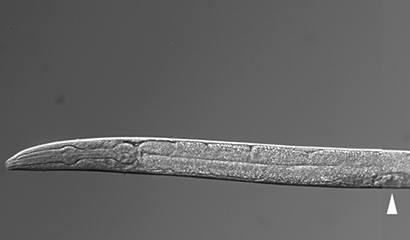
Aging Research Highlighted in Genetics
In most animals, the decline in fertility marks a time of pronounced rise in mortality rates, indicating that reproduction and aging are synchronized processes. How do animals sense reproduction in the gonads and translate this information into cellular and tissue homeostasis in the body to delay aging is not yet understood.
In Baxi et al., 2017, research led by the Carlos E. de Carvalho laboratory, and highlighted in the journal Genetics (http://www.genetics.org), provide one explanation for how this is achieved at the molecular level using the worm C. elegans as a model. In somatic cells, the acidity within cell digestion machines known as lysosomes is maintained via signalling from the gonad which ensures protein clearance while reproduction is ongoing. When animals crossed into post-reproductive life, lysosomes in body tissues alkalinize (become basic, higher pH) and proteostasis collapses, leading to protein aggregation and ultimately aging. A similar process happens in the vacuoles of mitotically old yeast cells to license biological aging. Thus, the regulated loss of lysosomal acidity as a response to diminished reproduction/proliferation may be a common signature of aging in eukaryotes.

